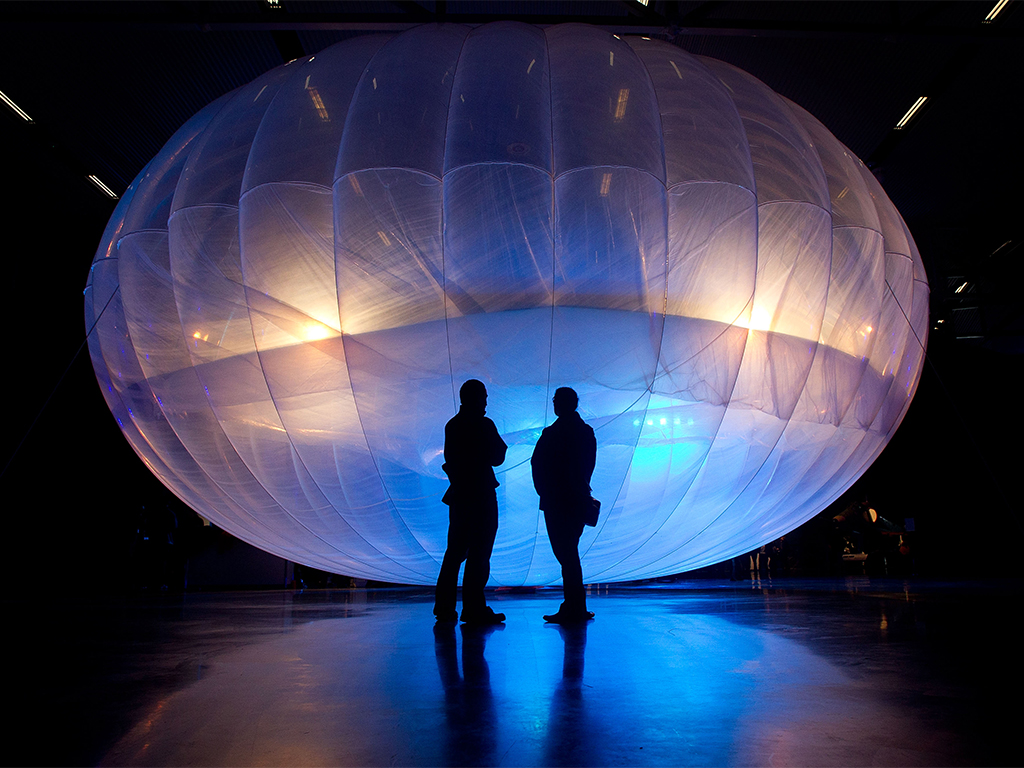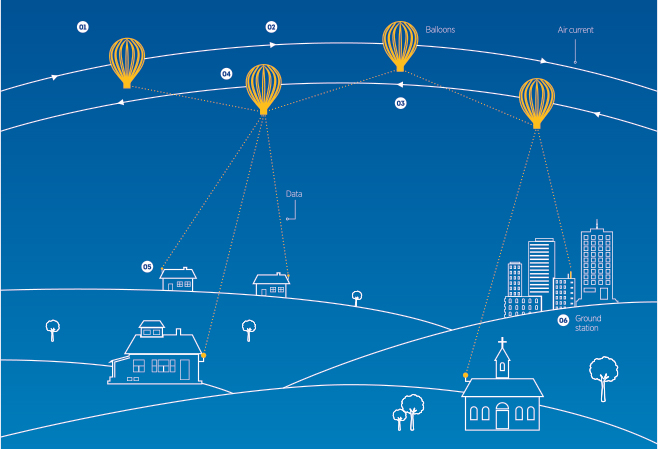Google’s Project Loon explained
The stratosphere is the new battleground for firms whose ambition it is to bring increased internet connectivity to the developing world

The internet is often likened to a global community, but two-thirds of the world’s population are without access: for those living in remote or developing countries, connectivity is often out of reach. We’re used to the idea that internet services can be provided through a wide range of technologies – telephone lines, television cables and fibre optics to name a few – but the idea of an internet connection through aerial or satellite sources still seems pretty far out. Nevertheless, some of the world’s more capable technology firms are already working on ways to hook us up via the stratosphere.
It’s an idea often met with scepticism – not least because of a number of failed projects in the 1990s, when the race for satellite-assisted connectivity really began. One notable case was the Motorola-backed Iridium, which filed for bankruptcy in 1999 having attracted $5bn in investment and delivered… well, very little actually. To work as planned, the system required a vast network of 66 satellites, the extraordinary cost of which caused the firm to default on its $1.5bn debt. To make matters worse, the company’s subscriber base was a paltry 10,000, which is unsurprising, considering the compatible handsets cost $3,000 and talktime as much as five dollars a minute.
Similarly, the Globalstar project, backed by Loral Corporation and Qualcomm, was plagued with delays and complications from its launch in 1991. Its eventual bankruptcy a decade later was the result of lavish spending and mounting debt.
Lifting me higher
Fast-forward to the present day, however, and efforts to conquer the stratosphere are far more convincing. Unsurprisingly, sitting at the head of the pack is Google, which last year announced Project Loon, a “balloon-powered internet for everyone”. Google’s inflatable, solar-powered balloon-like capsules use software algorithms to identify the specific atmospheric current they must travel in to deliver internet connectivity to a specific location. At 20km above the Earth’s surface, the balloons work together to form a global communications network, capable of connecting users via antennae.
Earlier this year, Google also announced it was acquiring Titan Aerospace. It’s hoped Titan’s solar-powered drones will lend a hand in expanding internet access to developing countries.
In March, Facebook announced its plans to increase global connectivity by using solar-powered drones, lasers, and low Earth orbit and geosynchronous satellites. The move follows the launch of Internet.org last year, a partnership between Facebook and various other technology firms that aims to bridge the connectivity gap for those in the developing world.
Sovereign objections
Although the intentions of both Google and Facebook are admirable, the two will no doubt come up against stiff opposition from governments who are unwilling to have their airspace intruded upon by Western-made machines. While the benefits of greater connectivity are plain to see, the prospect of having communications rest on foreign providers is enough to unsettle authorities to the point of non-compliance.
Regardless, many of those working towards the goal of greater connectivity believe internet access is a basic human right. For as long as enterprising firms such as Google and Facebook continue at this pace, the prospect of global connectivity looks increasingly likely.
Google’s Project Loon explained
The balloons draw power from the solar panels they carry and are controlled from ‘Loon Mission Control’, where staff can monitor position, altitude, ascent rate, pressure and other variables.
The balloons float 20km up. Here, the different layers of the Earth’s stratosphere move in well-defined directions: by moving up and down between these layers, the balloons can be kept in groups.
The balloons move in a chain around the world. As one leaves a particular spot, the next balloon takes over. This means ground users experience minimal disruption to their connection.

Though the balloons are well above most air traffic, their controllers need to communicate with air traffic control during ascent and descent. Securing that cooperation could be a stumbling block.
Users on the ground will be hooked up to specialised antennae, which communicate with the balloons.
The circular shape of the antennae helps make up for the varying distance of the satellites.
The balloons pass information from the ground between each other, until the data reaches a balloon that is within range of a ground station and, through it, an internet service provider.













